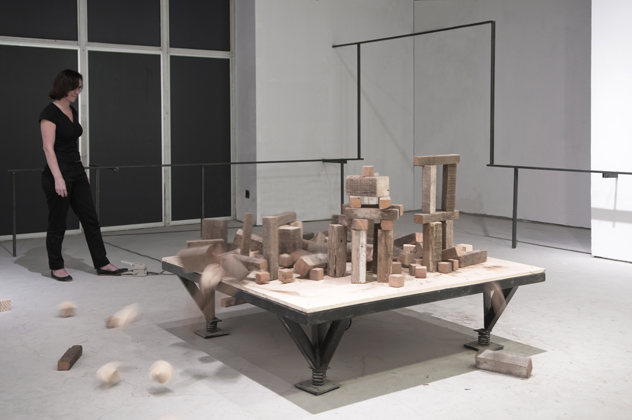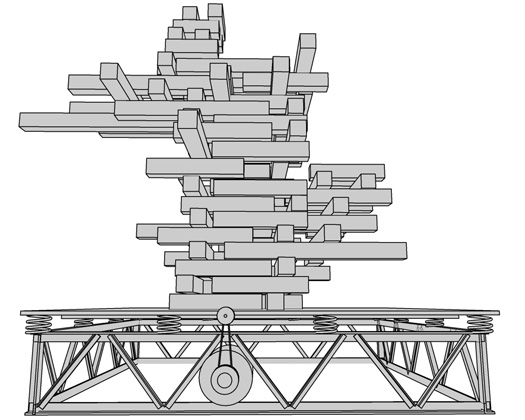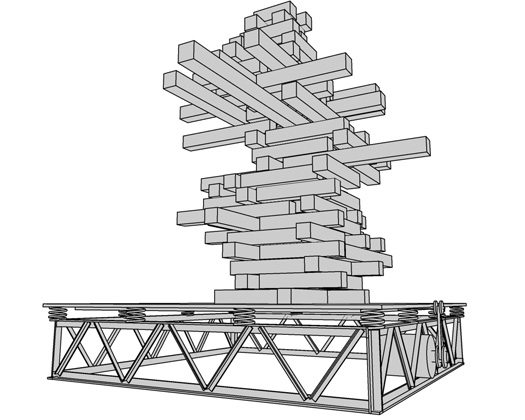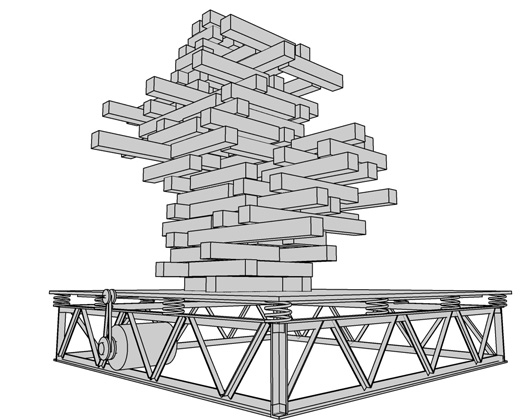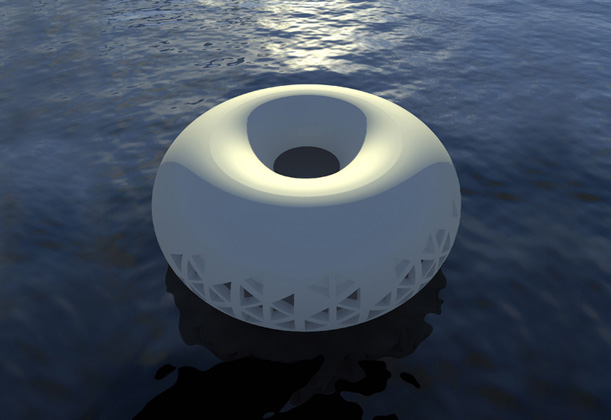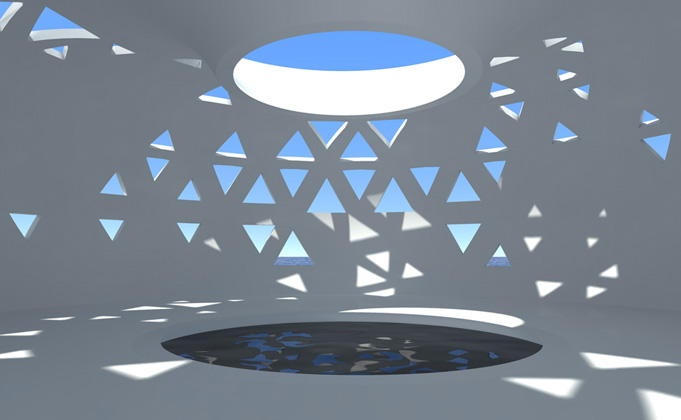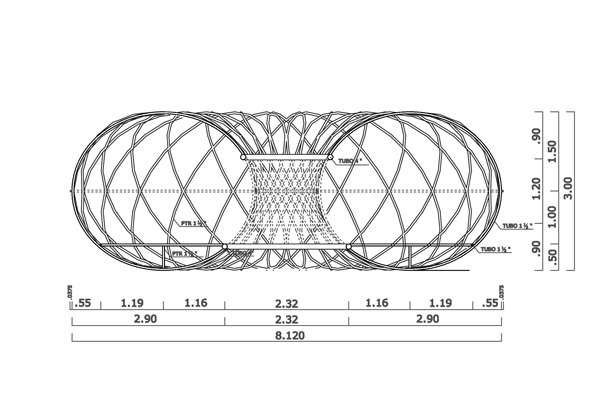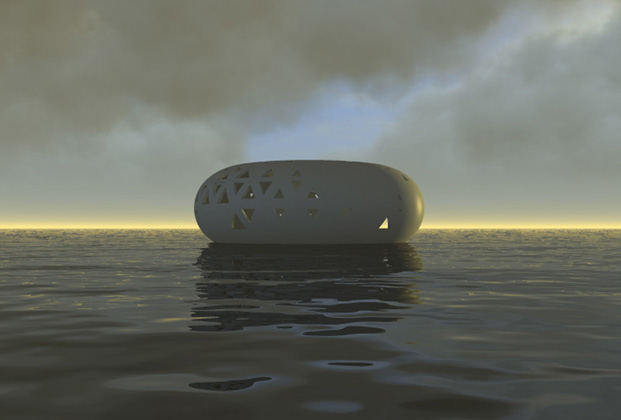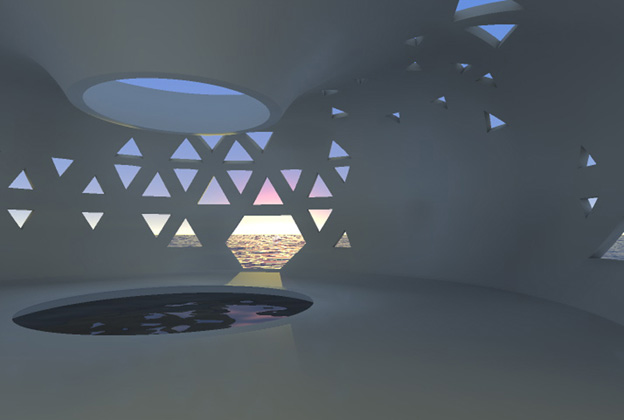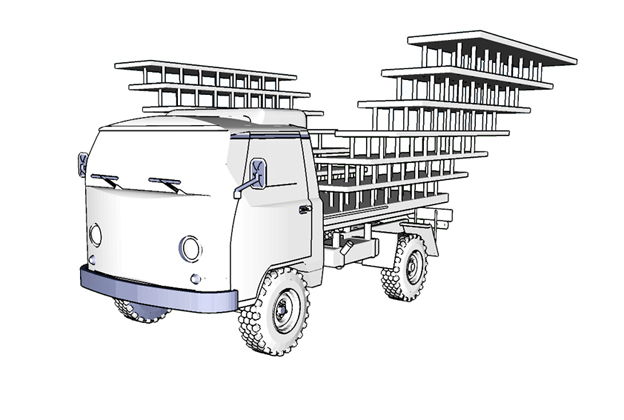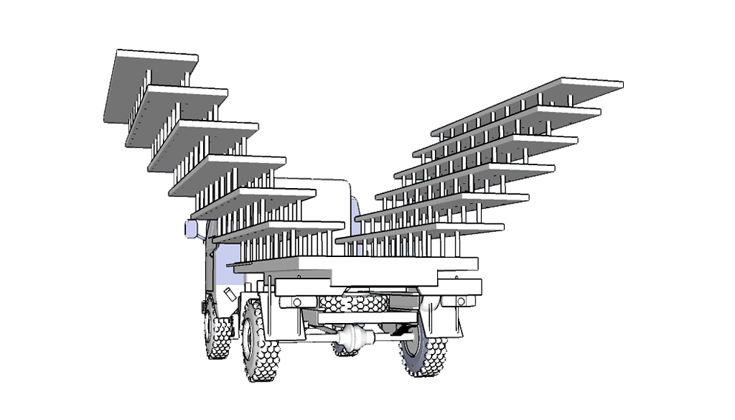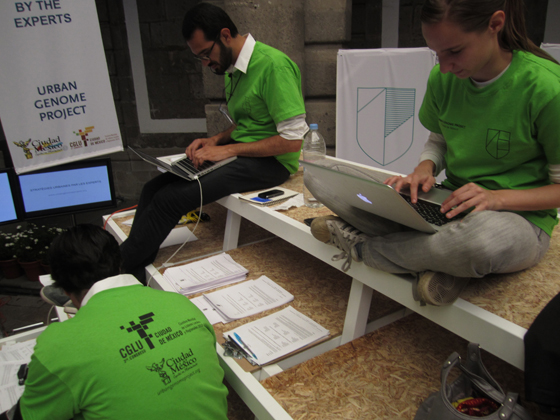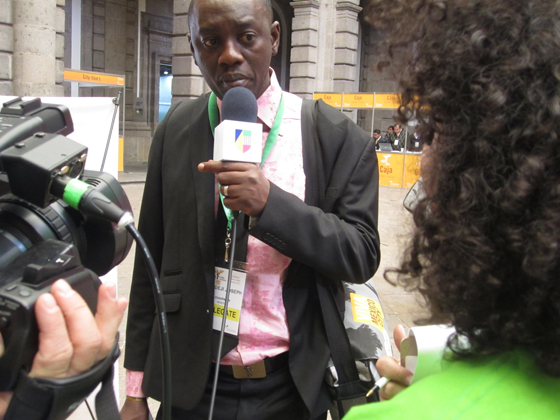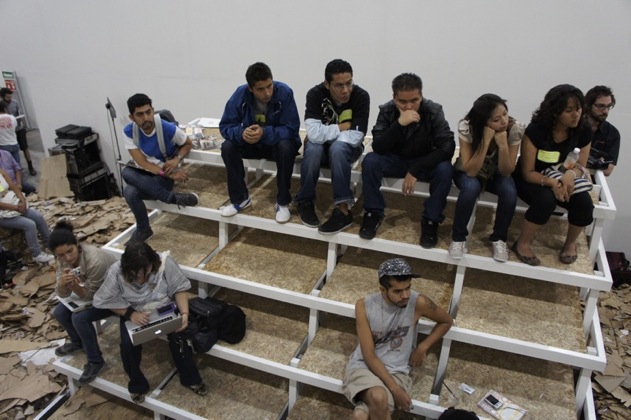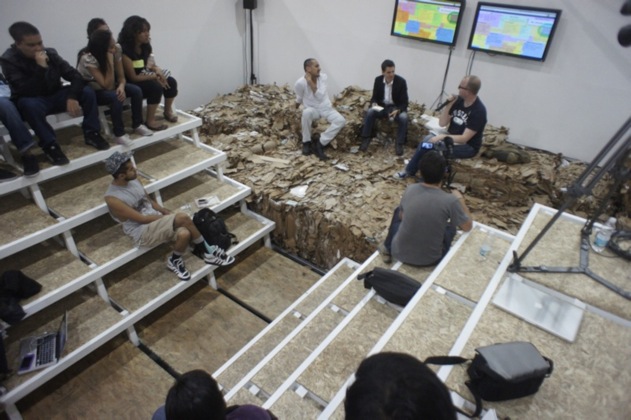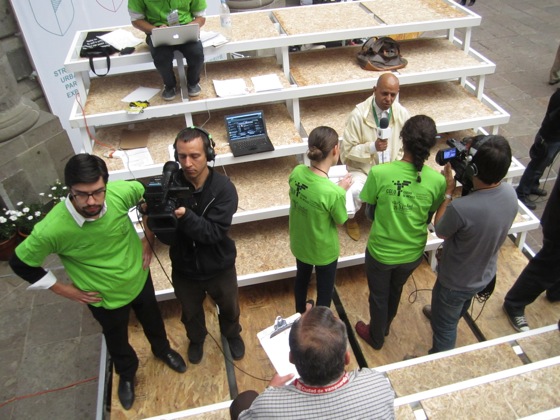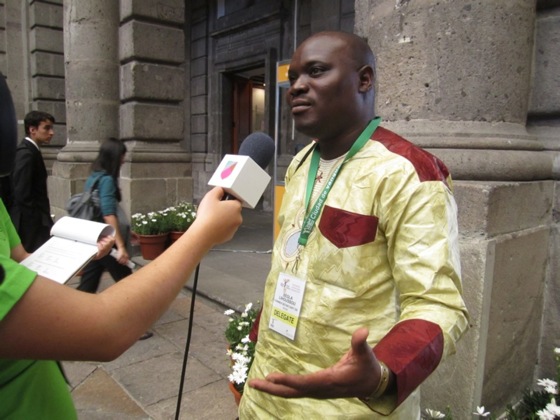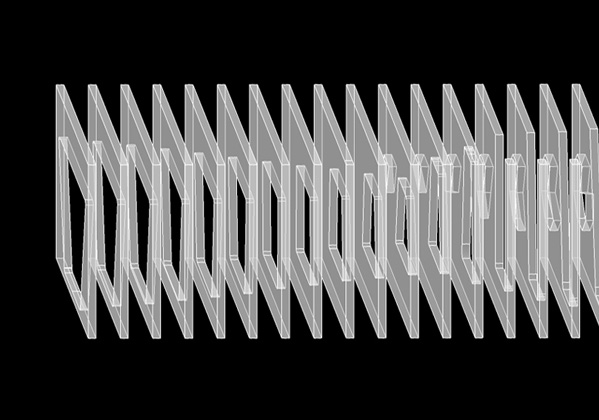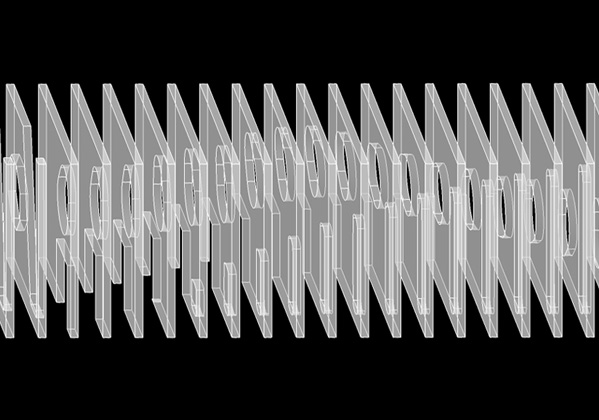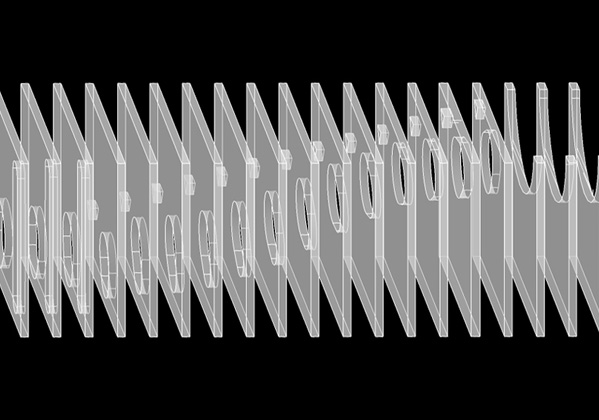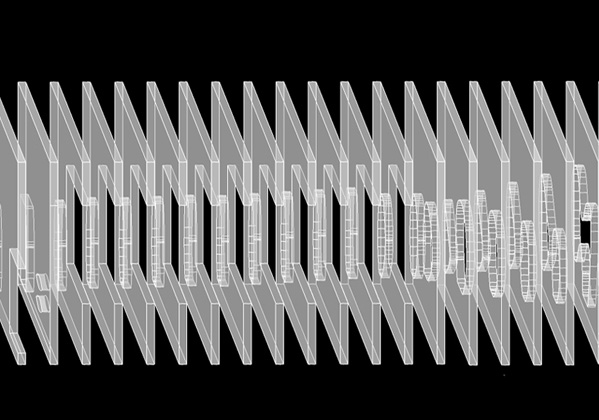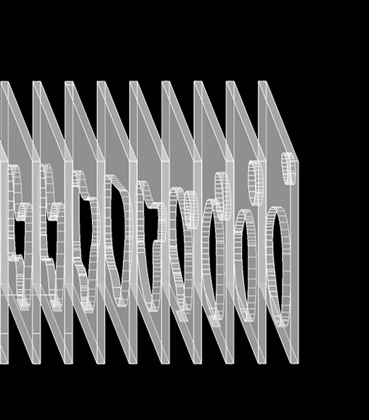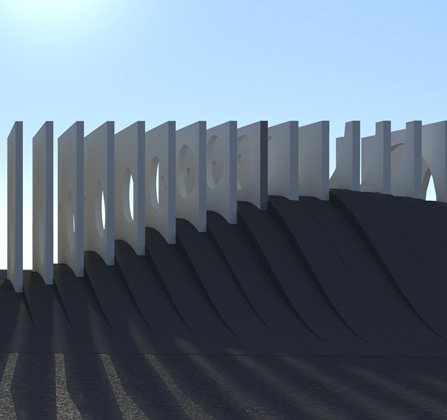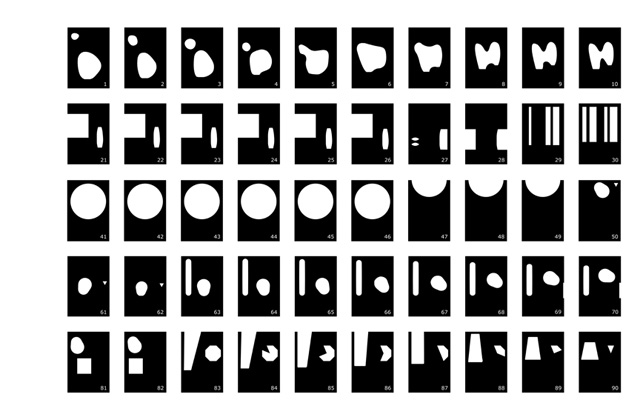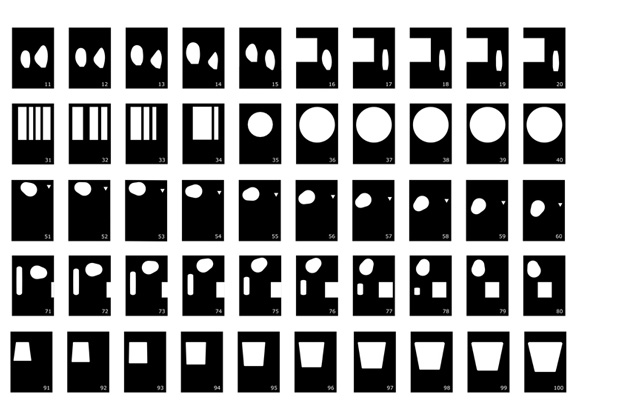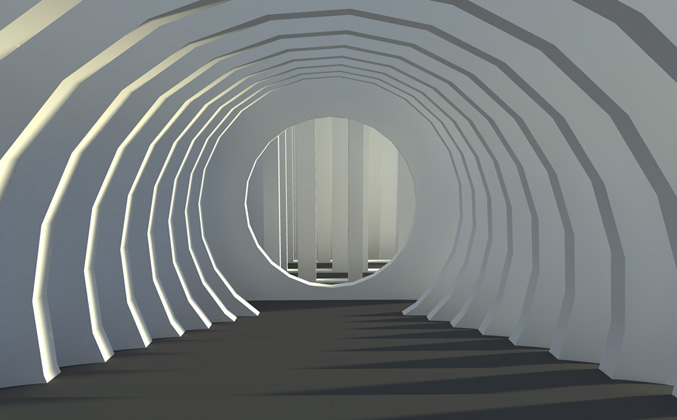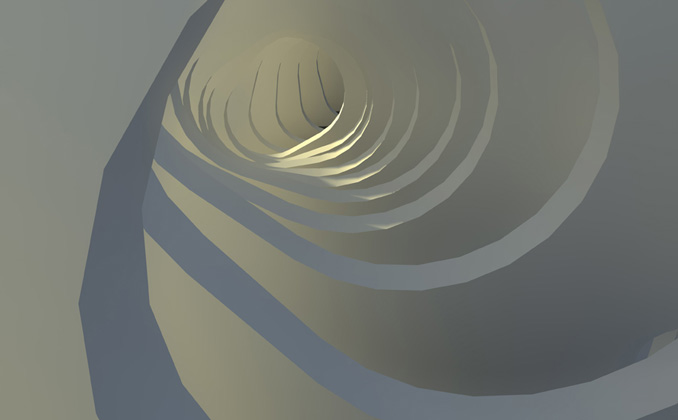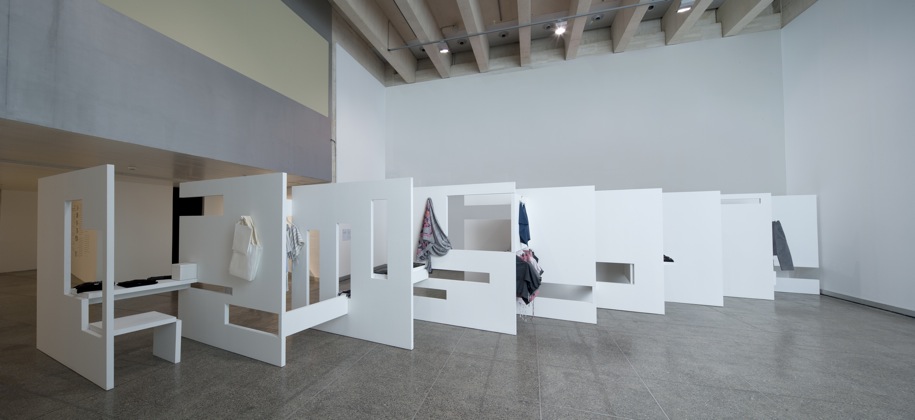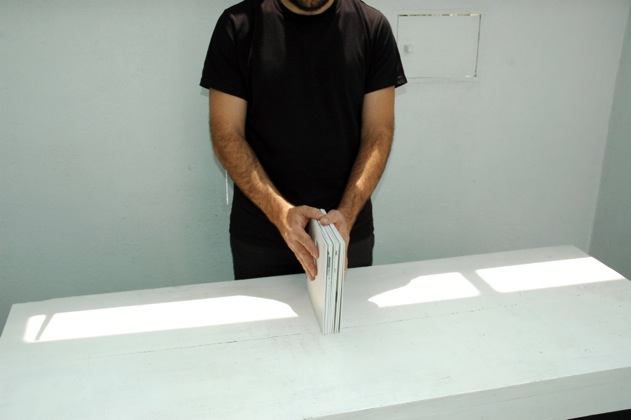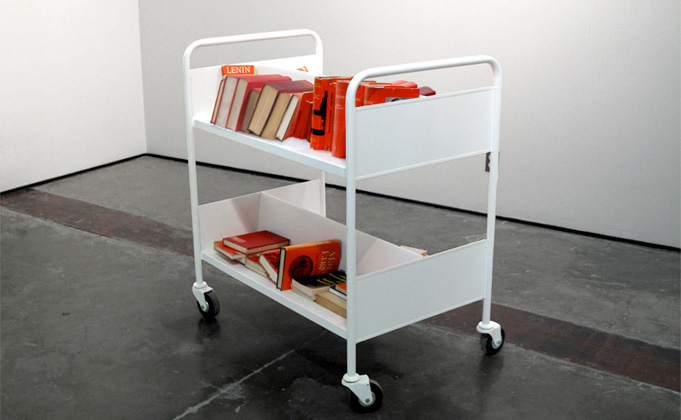| PEDRO REYES |
|
[Earthquake Simulator]
Galería Luisa Strina, Sao Paolo, Brazil
2010
|
|
Instructions of use:
1. Use the wooden blocks to build any kind of structure you wish on top of the vibrating table. 2. Once finished, use the digital camera to make a photo of your construction. 3. Be ready to take a second photo at the moment of the destruction. 4. Push the button to start the earthquake! 5. You can play again or let someone else try it. All the photos from structures created and destroyed will be printed and posted on the walls. |
|
(in progress)
Fiberglass structure Caletilla, Acapulco
2010
|
|
This floating island it’s a site-specific permanent work for the bay of Caletilla, Acapulco. The center of the torus has a cut, which becomes a round pool in the bottom and a zenithal light dome. It is inspired in the radial symmetry of Echinacea, in particular urchins. This is connected with an old interest in sea microorganisms, like radiolarian and diatomea, which inspired the capula series. If you see them at the microscope is surprising how this unicellular exoskeletons resemble miniature buildings such as ziggurats, towers and domes. I imagined what would happen if one of these microorganisms were enlarged thousands of times to became a space we could inhabit.
Despite its voluptuous appearance the structure is extremely rational. It relies on the most efficient use of materials to provide maximum span and resistance. This is a natural characteristic of shells, which I learned to love when I was an architecture student I assisted the notable architect and engineer Felix Candela. Candela spoke about “automatic beauty”. According to him you could use geometric Principles to define a building’s structure based on its function, span and budget. The right choice of a formula would automatically a single continuous surface, which could solve the project needs, plus providing beauty. I am not sure it’s true, but it is a very nice idea that worked for him.
|
|
Customized vehicle, video archive, website
2010
|
|
Genetically Modified Bureaucrats
The Urban Genome Project aims to 'map the code on which cities are written', using the human genome as a metaphor. Contained within each human DNA are 23 chromosomes, each of which is made up of hundreds or sometimes thousands of genes. Each gene has a role in determining the characteristics of the parts of the body it pertains to: the eye color, the shape of the kidneys, one's sex, one's tendency to develop diabetes.
Scientists worked throughout the 1990s and early 2000s to gather DNA samples from people of different backgrounds all across the world and to identify and map the genes that make up the human genome. Since every individual's genome is unique, the researchers had to 'prospect' a wide and inclusive variety of samples, in order to later map, or 'sequence,' many variations of each gene. Once scientists had sequenced the genes and their variants, determining which genes carried the instructions for what characteristic of the body, it allowed the possibility of recombination, in which a gene is altered or replaced with one of its variants in order to change the characteristic it controls. One potential use would be removing from the genome a gene that makes someone vulnerable to cancer; another use applies these techniques to agriculture with the idea to take a gene from a jellyfish and insert into a tomato to make the fruit last longer.
Regardless of what one thinks about the ethics of genetic modification, culture tends to work this way too. Someone notices an effective cultural product or urban strategy and recontextualizes it by adopting it in his own community. For example, the Metrobus system in Mexico City was inspired by the Transmilenio rapid transit system in Bogotá, Colombia, which was itself based on the bus system in Curitiva, Colombia. The strategies are simply copied by city leaders who recognize the potential benefit of a particular strategy for their home districts. This cultural recombination process inspired the Urban Genome Project, which I developed along with editor and curator Joseph Grima and the creative collective Pase Usted (After you). The project's goal is to create a digital platform based on the prospecting and sequencing of these urban best practices. Within the platform lives the knowledge collected from interviews with 500 mayors and delegates, who each spoke about specific tactics their cities had developed during their tenure. We chose to speak with mayors and delegates of urban areas because, as more and more of the world's population continues to concentrate itself in cities rather than rural areas, cities and their leadership are faced with increasingly complex challenges of governance, maintenance and crisis management. In the 21st century it will be largely up to cities and metropolitan areas, rather than nation states, to shape the world's social, political, cultural, technological and economic agendas. And each of these urban areas operates according to the unwritten codes created by the extensive administrative work undertaken by those who govern cities. In order to map out these codes and provide detailed records for other urban decision makers, we invited each of the 500 leaders to speak about five issues he or she felt had been success stories from their administrations, thereby focusing the research on the bright spots. We avoided generic questions such as 'how do you make your city better?' because we wanted these leaders to give us specific, detailed information about how to create and implement the tactics they told us about. So the more specific the question, the more specific the answer and the more useful it will be. The interviews were filmed upon the UGP Mobile Unit, a folding mobile research station that traveled to different venues and summits where city leaders were gathered. When closed, it is compact and easily transportable. Open, it has the capacity to seat up to sixty people, becoming a stage upon which to capture our talks with each leader. Once the 500 interviews were collected, our 'prospecting' phase concluded and the sequencing began. Each interview is divided into five segments according to the different subjects discussed by the leader featured. All of the five strategies are tagged by its content. If one mayor was proud of how she managed to incorporate bike lanes in her city, that discussion, tagged with 'bicycles' or 'bike lanes,' ends up in a register together with the comments of the other 16 mayors who talked about bike lanes. A future user of the UGP who wants to know about creating bike lanes in his city is then able to perform an online search looking for that particular information. The register allows him to compare the different approach that each leader took to this certain topic. The topics in the database cover a multitude of areas of urban planning and development, including crime reduction, infrastructure, education and management of natural disasters. Once this sequencing phase is finished, the UGP's digital platform will be complete, and it will be up to users to carry out the process of recombination, 'genetically' modifying the way their cities are administered with the assistance of this map of best urban practices. |
|
(in progress)
Concrete, stone, vegetation Monterrey, N.L. México
2010
|
|
On ocassion of Mexico’s bicentennial celebrations the city of Monterrey organized a competition for a memorial plaza. I submitted a proposal which was awarded the first prize and is currently under development. In the site 80% of the surface will be devoted to an urban forest. The other 20% is a sculpture work 100 mt long, which consist of 100 monolithic walls, each wall measuring 6x6 m. Every wall features a series of perforations so the sculpture can be walked from one end to the other as well as crossways.
The sculpture is not only an object to be seen, where citizens are spectators, but rather a stage where they become actors. Each hole in the slabs is like a window framing the action in the place, so even involuntary acts seem part of choreography. Two spaces in the structure are specifically arranged to magnify this effect, presenting opportunities for different kind of scenic arts.
This sequence of slabs presents some analogies: geological stratums, pages from a book, years in time, etc. It is a metaphor of history as human movement can connect a sequence of spaces. |
|
Painted wood, mechanical parts
MUSAC, Leon, Spain
2010
|
|
This folding structure is an exhibition display for fashion designer Carla Fernandez. It blends the function of a pop-up store with the features of a pop-up book. Elements such as tunnels, flaps, pull-tabs, pop-outs, pull-downs, etc. It performs all the requirements of a portable store: showroom, dressing room, cashier, storage, racks, shelves, mirrored rooms etc. When folded, the structure can be shipped to a different site minimizing the materials used in every new venue.
Being part of a museum exhibition, the pop-up store activated a real economy in the exhibition space. According to Carla Fernandez, fashion is only fully experienced if the public can try and test a garment of their choice, knowing they can acquire any of the pieces in stock. The social mission of the label has a long-term commitment to the indigenous communities that participate in the making of the clothes. In this sense the exhibition space is a good opportunity to explain the elaborate craftsmanship process required for the completion of each garment.
|
|
Library cart, assorted books on socialism
2010
|
|
|

